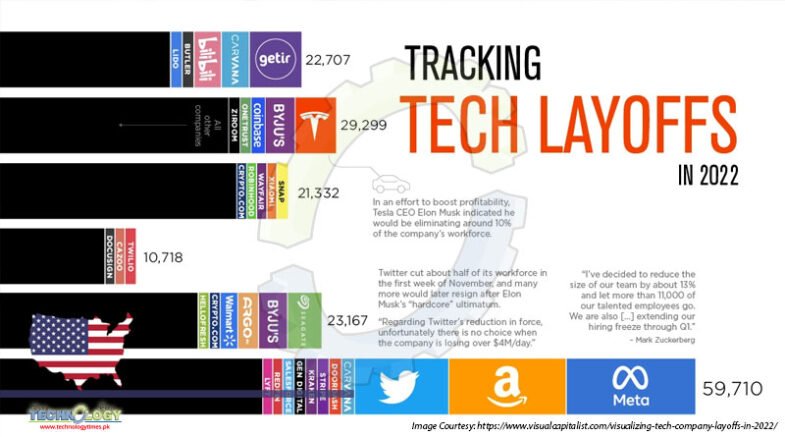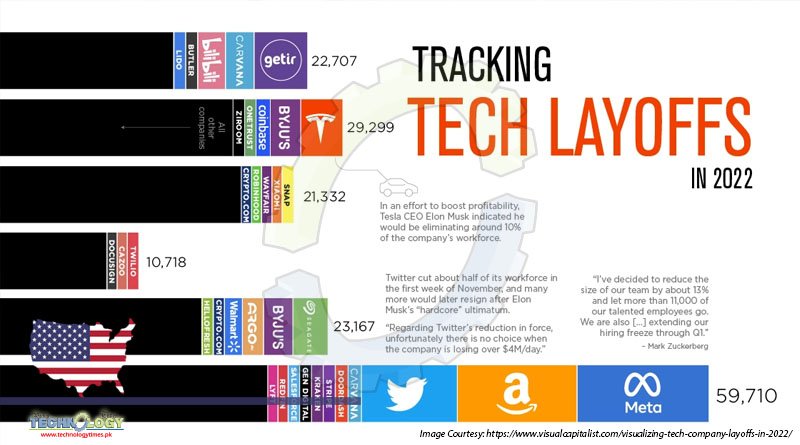“The magnitude of the layoffs is of the likes I have never seen before. There is chaos and confusion,” said Tahmina Watson, an immigration lawyer.

More than 146,000 tech workers have been laid off so far this year, according to Layoffs.fyi, which tracks them, including 51,000 in November alone. A substantial share of those terminated were foreigners, even though employers have not disclosed how many workers on temporary visas have been let go.
Since Microsoft brought him to the United States 14 years ago, Abhishikt Jain has excelled professionally, raised a family and settled into a four-bedroom house with a garage “full of unnecessary stuff,” he said. “You could say I achieved the American dream,” said the software engineer, now 43, who is from India and lives in Bellevue, Wash.
But in October, Mr. Jain fell victim to layoffs battering the tech industry, and suddenly his family’s future was thrust into uncertainty. On the cusp of securing permanent U.S. residency after a 12-year-wait, Mr. Jain instead faced the prospect of packing up and leaving the United States unless he quickly found another job or finally received his green card.
After years of galloping growth, the U.S. tech sector has slammed on the brakes amid rising inflation and worries about a recession. A hiring bonanza has given way to drastic head count reductions to slash costs.
Getting sacked during the holiday season is a blow to any worker. But for foreigners on temporary work visas, the challenges go far beyond managing without paychecks. They must find jobs within 60 days at another company willing to sponsor them for a visa, or they must leave the country. And many stand to lose their shot at U.S. permanent residency after spending years in a green-card backlog.
“The magnitude of the layoffs is of the likes I have never seen before. There is chaos and confusion,” said Tahmina Watson, an immigration lawyer in Seattle who has been barraged with queries from laid-off foreign workers. “Not only are tech companies laying people off in unprecedented numbers, but they are also implementing hiring freezes,” she said, “and thus, there are likely few alternative jobs for immigrant workers.”
Mr. Jain, who lost his job at Microsoft in October, is among tens of thousands of Indian engineers who for years have been creating software at information technology companies like Cisco, social-media platforms like Meta and online retailers like Amazon. Because of their crucial role, and a dearth of American STEM graduates, many foreign workers are being sponsored by their employers for U.S. permanent residency.
While parked in the backlog waiting for approval, the immigrants have built lives in the United States: They have had American children, taken out mortgages and become rooted in their communities.
Most are on high-skilled worker visas known as H-1Bs. More than 500,000 people, are in the United States under the visas, the largest number hailing from India, followed by China, with the majority in science and technology fields.
Demand for such talent has soared as the U.S. economy has become increasingly reliant on technology. Between 2000 and 2019, the number of tech workers in the United States jumped by 44 percent, to 10.8 million from 7.5 million. For their programming, coding and other skills, many receive six-figure salaries. As of 2019, foreign-born workers made up almost a quarter of all STEM workers in the country, up from about 16 percent in the year 2000, according to an analysis of census data by the American Immigration Council.
The visa holders are concentrated in California, home to Twitter, Meta and Apple, and in Washington state, home to Amazon, Microsoft, Zillow and Expedia. But they are also in states like Arkansas, toiling at the headquarters of Tyson, the poultry processor, to improve production efficiencies, and at Walmart, to design systems for self-checkouts.
This year, U.S. employers filed more than 480,000 petitions for the 85,000 H-1B visas available, and as in previous years, the government turned to a lottery to allocate them because of the large volume of applications. But recent layoffs in the tech industry have abruptly upended the lives of workers already here.
After completing his acquisition of Twitter, Elon Musk slashed half the staff, or 3,700 employees, leaving many foreign workers on visas in urgent need of new employment. “I am on an H-1B visa and have only 60 days to start a new job,” Yiwei Zhuang, a Chinese software engineer, wrote on LinkedIn.
After losing her job at Twitter, Sujatha Krishnaswamy, an Indian national, took to the platform to voice her angst at her precarious situation. This year, while pregnant, “I worked day and night to successfully deliver a critical user-facing privacy feature to meet Twitter’s regulatory obligations,” she wrote. “I gave my heart and soul every day to meet Twitter’s Security and Privacy promises to users and regulators.” Her H-1B status, she noted, was “exacerbating my situation.”
Originally published at The New York Times
